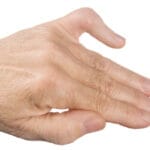Introduction:
The intervertebral disc, a small but crucial part of your spine, plays a big role in keeping you moving comfortably. In this guide, we’ll explore the intervertebral disc, its structure and functions, its ability to withstand stress, and the problems that can occur.
Anatomy and Function:
The intervertebral disc has two main parts: the tough outer layer known as the annulus fibrosus and the jelly-like centre called the nucleus pulposus.
Together, they create a strong yet flexible cushion between your vertebrae, allowing your spine to move smoothly while providing support.
Inside the annulus fibrosus, special cells make tough fibres called collagen, which strengthens the disc.
Proteoglycans, also found in the annulus, help keep the disc flexible and resistant to wear and tear.
Meanwhile, the nucleus pulposus is mostly water and has cells that produce collagen and proteoglycans.
This jelly-like centre helps absorb shocks and keeps your spine flexible.
Blood Supply and Innervation:
Interestingly, the intervertebral disc doesn’t have its blood supply. Instead, it gets nutrients through tiny pores in the surrounding bone. Nerve fibres mainly reach the outer layers of the disc, helping you sense pain and movement.
Biomechanics:
The intervertebral disc is like a tough but flexible cushion, able to adapt to different movements and pressures.
It can slowly change shape over time (creep) and absorb energy during repeated compression (hysteresis).
During movement, the outer annulus fibrosus handles twisting forces, while the inner nucleus pulposus absorbs pressure to keep your spine balanced.
Pathoanatomy:
Despite its toughness, the intervertebral disc can face problems as you age. Issues like disc herniation, where the disc bulges or ruptures, can happen due to wear and tear or disc structure changes.
As discs age, they lose water and vital cells, making them less flexible and more prone to damage.
Changes in the disc’s chemical makeup can also occur, leading to issues like disc degeneration.
Conclusion:
The intervertebral disc might be small, but it’s important for your spine’s health. By understanding how it’s built, works, and what can go wrong, you can better appreciate its role in keeping you moving comfortably.








